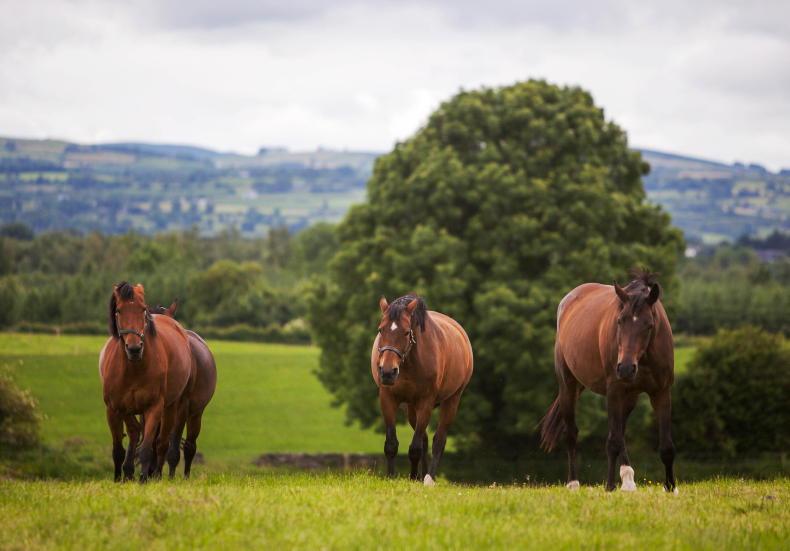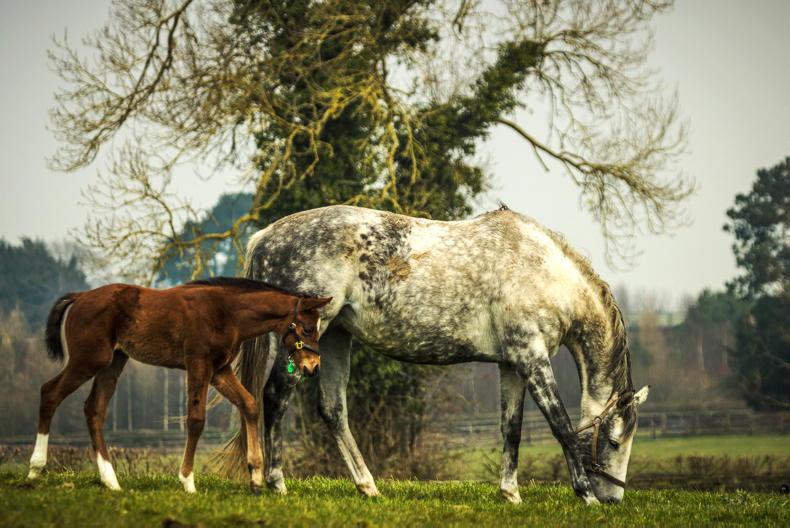WITH the breeding season well underway and St Valentine’s Day imminent, mare owners are considering their stallion choices carefully.
At this time of year, the focus is on the mare ensuring she is in optimum health for foaling down and has the nutrients required for lactation to satisfy the new born and rapidly growing foal. But let’s not forget about the ‘boys’ - stallions too, in this busy covering period, will have additional nutritional demands.
FEEDING THE STALLION
First of all, stallions whether in competition or solely at stud need to be fit and agile. There is an increased energy demand during the covering period and the demand for minerals and vitamins also increases.
Vitamin A is directly involved in sperm production but as it is a fat-soluble vitamin, deficiency is rare. Vitamin E supplementation has been noted to increase fertility and has strong antioxidant properties.
Thus, a diet matching the macro nutrient requirements to the stallion depending on temperament and activity levels, as well as being supplemented with a Vitamin E source such as TRM’s Vita E Plus (with added benefit of B Vitamins, Lysine, Selenium and Vitamin C) will keep stallions in full vitality for the mating season.
If an ‘all- round’ multivitamin supplement is desired, TRM’s SpeedXcell will provide 20 key nutrients that will bridge the gap between the increased nutritional requirements of ‘working’ stallions and an environment that, at this time of the year, supplies low levels of vitamins and minerals from natural sources.
FEEDING MARES DURING LATE PREGNANCY:
The greatest in utero foal growth and nutrient demand occurs during the last trimester.
Providing the mare with high-quality forage and a feed designed for pregnant mares will provide her with the bulk of her nutritional requirements.
However, don’t neglect Vitamin E levels for broodmares in the final weeks of the last trimester. Depending if your mare has access to good grass and what additional feed she is receiving, will determine her nutrient requirement.
Good-quality grass is a rich source of vitamin E, calories and protein. However good grass is not too easy to come by at this time of the year and hay is not a source of vitamin E. Therefore, horses (regardless of reproductive status) on hay-based diets or poor pasture need supplemental vitamin E.
Vitamin E passes from the mare to the foal via colostrum, which the mare makes during the last weeks of pregnancy, mares on a hay-based diet will benefit from Vitamin E supplementation at this stage.
Feeding TRM’s Vita E Plus will ensure that broodmares receive a concentrated source of vitamin E as well as vitamin C, with the additional benefit of the essential amino acid to fortify young growing stock.
Minerals including calcium, phosphorus, copper, zinc and manganese are essential to support the rapid rate of bone development of the in-utero foal. The foundations for a horses’ skeletal health and future athletic success can be established before it is even born.
Ensuring broodmares have an appropriate intake and balance of macro-minerals, trace minerals, and amino acids in the diet to pass on to the foal, both in utero and following birth via the milk, is critical.
TRM’s Calphormin gives young horses the best start they can get, initially through supplementation of the mare, and latterly by feeding directly to foals and youngstock. Continuing to feed young, rapidly growing horses Calphormin helps to maintain optimum growth and bone development.


 This is a subscriber-only article
This is a subscriber-only article
 It looks like you're browsing in private mode
It looks like you're browsing in private mode











SHARING OPTIONS: